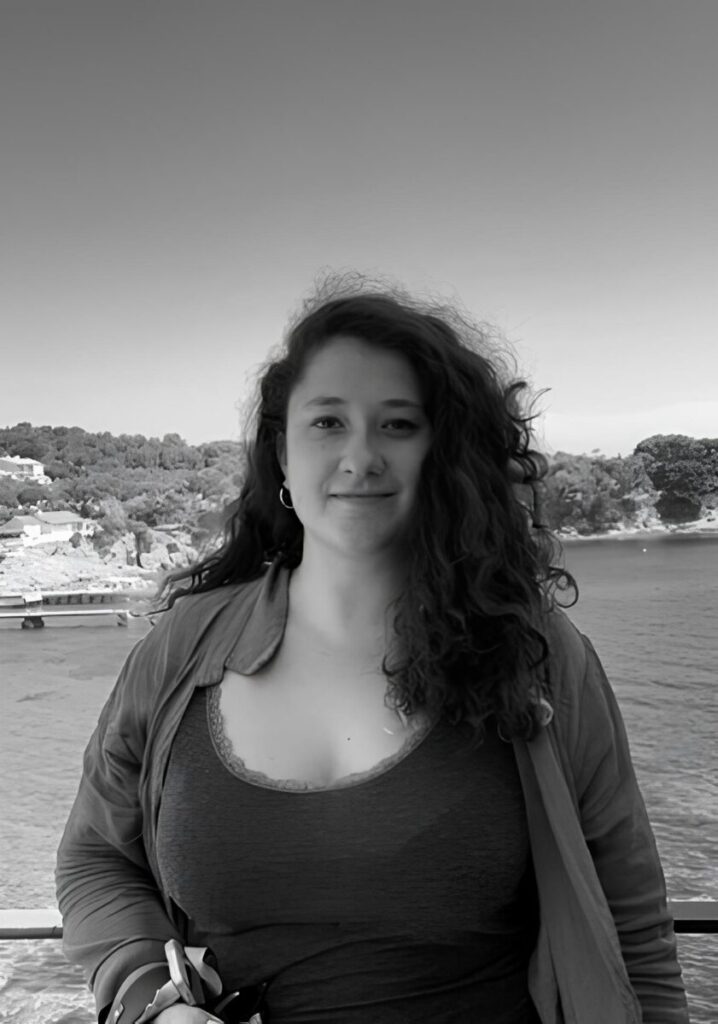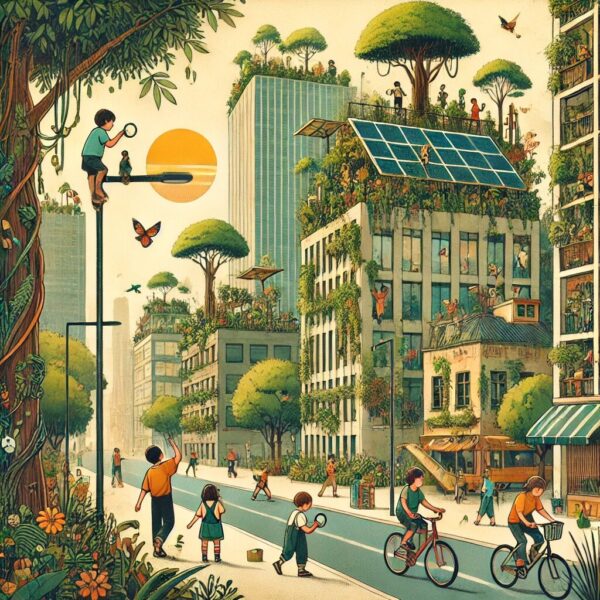At a time when natural spaces are becoming scarce in urban areas, education about biodiversity is becoming an essential issue to reconnect citizens, especially the younger ones, to living nature. Sociologists have recently shown that words related to nature, such as fern or crow, are disappearing from children's dictionaries, replaced by technological terms like Wi-Fi or social networks (1,2). This reflects a growing disconnection of young people from their natural environment.
Interview conducted by: Justine Viros – Scientist specializing in environmental transition, Mediterranean forest, and chemical interactions between forest and atmosphere in the context of climate change.
As Magali Deschamps Cottin points out, this growing disconnection has direct consequences: how can we protect what we do not know? In Marseille, attention has long been focused on peripheral natural spaces, such as the Calanques or the Mediterranean hinterland. But the city itself harbors unsuspected biodiversity.
Marseille: a Mediterranean example of urban biodiversity
Until 2008, urban biodiversity in Marseille was little studied. Magali Deschamps Cottin and her doctoral student between 2008 and 2011 (Marie-Hélène Lizée) undertook a census of daytime butterflies in urban green spaces, revealing a surprising diversity, even in the city center. From the Jardin des Vestiges, near the Old Port, to Longchamp Park, it is possible to observe butterflies, proof that some species manage to survive despite urbanization. (3)
However, studies show a gradual loss of Mediterranean butterfly species, replaced by more generalist species better adapted to the transformations of the urban landscape and the available plant species. This evolution underscores the urgency of rethinking the design of green spaces to maintain and restore the diversity of local species. The preservation of wasteland spaces or naturally maintained gardens helps to sustain a Mediterranean ecosystem within cities and thus allows the development of associated wildlife.
Beyond the specific case of butterflies, the issue is broader: how to adapt our cities to environmental challenges while fostering the connection between residents and nature? Magali Deschamps Cottin identifies three major levers: 1) greening urban spaces by favoring local species and reducing soil sealing, 2) preserving natural habitats by allowing spontaneous nature zones and limiting soil artificialization, 3) training and raising awareness among citizens and decision-makers to involve them in managing their environment.
The Urban Butterfly Park, an urban space dedicated to biodiversity, education, and research
In this context, the Urban Butterfly Park was created in the 14th arrondissement of Marseille, at Bastide Montgolfier. This project, born from urban ecology research conducted by the Population-Environment-Development Laboratory (LPED), aims to reconcile biodiversity preservation, education, and training (4).
This unique space is not just a simple refuge for wildlife and flora. It serves as a genuine study ground for researchers, students, and green space management professionals. Currently closed to the public (except for occasional events), it hosts a training venue for various audiences, including municipal agents, with the goal of disseminating management practices that favor biodiversity in cities. After its first twelve years of existence, the park had already proven its worth. Indeed, Magali Deschamps Cottin's team observed an increase in butterfly species visiting the site, rising from 17 species in 2010 to 34 species in 2020. (5)
A reproducible model for other cities
The ambition of the project does not stop at Marseille. Thanks to the Urban Butterfly Park Association, the initiative is structured around a charter guaranteeing respect for a scientific and educational dynamic. Similar projects are already underway in Bordeaux and could soon emerge in Angers or Lille.
Urban parks are not only refuges for biodiversity; they also serve as awareness-raising tools and levers for ecological transition. “We want to organize training for elected officials to better integrate biodiversity into urban planning,” explains Magali Deschamps Cottin. Because while urban planners and landscape architects are now more aware of ecological issues, the involvement of political decision-makers remains essential to evolve practices.
This approach highlights an essential principle: integrating biodiversity into cities should not be limited to planting a few trees or installing birdhouses. It is primarily about creating spaces where citizens, researchers, and managers can collaborate to understand and protect living nature.
Indeed, in the face of some local authorities' reluctance to green public space – due to fears of insects or lack of knowledge – education plays a key role. As the researcher reminds us, “learning from a young age to know nature and how it works would allow us to respect it, conserve it better, and avoid many problems.”
Unlike the approach that highlights emblematic species, Magali Deschamps Cottin emphasizes the importance of so-called "ordinary" biodiversity, the one that makes up our daily lives. Raising awareness among city dwellers about the ecological richness of their immediate environment is a key issue.
For example, the two-tailed pasha, a Mediterranean butterfly dependent on the strawberry tree for the development of its caterpillar, has been chosen as the emblematic Mediterranean species of the Urban Butterfly Park, to illustrate the importance of vegetation for all stages of development in the city. Indeed, while the relationship of the adult with nectar plants is often discussed, the role of host plants and their importance for the caterpillar stages that condition the effective presence and development in situ of species is rarely addressed. Without strawberry trees, no reproduction of Pasha!
Observing such a butterfly in the city allows for a tangible connection between residents and their natural environment, thus fostering awareness.
Initiatives like the Urban Butterfly Park show that biodiversity in the city should not be seen as an obstacle, but rather as an opportunity. Often this involves the need to rethink cities: a greener city with diverse plant palettes, more resilient and educational, is possible, provided that living nature is fully integrated. (6)
Biographies

Magali Deschamps Cottin – Teacher-researcher at LPED (Laboratory of Populations, Environment, Development). An ecologist, trained as an entomologist, specialized in urban ecology, she is interested in the dynamics of animal communities in ecosystems altered by studying the mechanisms of their maintenance or colonization in relation to management practices and the naturalness of these spaces. Her research is primarily conducted in interdisciplinary collaboration with sociologists, geographers, and urban planners in partnership with managers of urbanized spaces. She was the initiator of the Urban Butterfly Park project.

Justine Viros – Scientist specializing in environmental transition, Mediterranean forest, and chemical interactions between forest and atmosphere in the context of climate change. She currently holds a research engineer position within the Interdisciplinarity mission of Aix-Marseille University, where she is responsible for development for the Neede Méditerranée association. She notably participated in writing the application of Aix-Marseille University in partnership with Neede for the creation of a UNESCO chair titled “Education for Environmental Transition in the Mediterranean.”
Sources
(1)Luthin, Margaret C., "Loss for Words: An Investigation of the English Nature Vocabulary" (2020). Undergraduate Theses, Professional Papers, and Capstone Artifacts. 294.
https://scholarworks.umt.edu/utpp/29
(2) Craps, S. (2024). Lost Words and Lost Worlds: Combatting Environmental Generational Amnesia. Memory Studies Review, 1(1), 36-55. https://doi.org/10.1163/29498902-20240001
(3) Marie-Helene Lizee, Rémy Bonardo, Jean-François Mauffrey, Thierry Tatoni, Magali Deschamps-Cottin. Relative importance of habitat and landscape scales on butterfly communities of urbanizing areas. Comptes Rendus Biologies, 2011. ⟨hal-02109128⟩
(4) Deschamps-Cottin, M., Vila, B., & Robles, C. (2019). The Urban Butterfly Park: a collaborative device for research, training, and dissemination of knowledge on urban biodiversity. Environmental Education. Perspectives-Research-Reflections, 15(1).
(5) Deschamps-Cottin M, Jacek G, Seguinel L, Le Champion C, Robles C, Ternisien M, Duque C, Vila B. A 12-Year Experimental Design to Test the Recovery of Butterfly Biodiversity in an Urban Ecosystem: Lessons from the Urban Butterfly Park. Insects. 2023; 14(10):780. https://doi.org/10.3390/insects14100780
(6) Urban, M.C., Alberti, M., De Meester, L. et al. Interactions between climate change and urbanization will shape the future of biodiversity. Nat. Clim. Chang. 14, 436–447 (2024). https://doi.org/10.1038/s41558-024-01996-2
